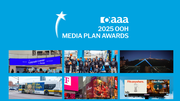Blog
Fit-for-purpose digital signage displays optimize ROI and innovation
Sometimes the 'best' display isn't the best fit for your digital signage deployment.

May 22, 2014 by Craig Scott — VP Sales & Marketing, www.digbil.com
Moore's law states that the processing power of computer chips doubles every 18 months. A similar rate of innovation occurs in the display industry as technologies continue to evolve and improve.
The money saved from purchasing a "fit-for-purpose" digital signage display can be re-invested into better content and newer technology once it's available. Every two to three years displays will be lighter, brighter, more efficient in terms of power consumption and will provide higher resolutions.
As the new digital signage displays will comprise solutions that are cheaper, more suitable and faster for their respective applications, there will be little to hold consumers back from investing in them.
So how would consumers know when they are not optimizing ROI with their choice of digital signage displays, or when they are not taking advantage of the latest innovations the industry has to offer?
Simple: It's when they choose to invest in the following.
1. Exaggerated screen lifetimes
An unfortunate consequence of purchasing screens with long screen lifetimes is that customers pay a premium for unnecessary features. After overspending on commercial displays, customers are more likely to keep them longer to justify their cost.
This in turn leaves end-users locked into old technology with diminishing usefulness as display technology advances. These consumers mainly fall behind in the areas that see continual improvement over time, such as the following:
- higher resolution (e.g. 4K);
- greater contrast;
- lower power consumption;
- lighter weight;
- slimmer profiles;
- faster screen refresh rates;
- higher pixel density; and
- 3D technology.
2. Indoor use of screens with high brightness
Screen brightness can be a controversial topic in digital signage. Marketing materials for commercial displays often push higher brightness levels (often referred to in the unit known as a "nit") as a priority, at the top of specification lists. However, what they often fail to mention is that different nit measurements are suitable for different contexts. The effectiveness of nit levels are impacted by additional factors such as contrast ratio, viewing angle and distance, the brightness of the surrounding environment, screen reflectiveness and specific aspects of the content being displayed such as color and motion.
Higher screen brightness significantly impacts the cost and reduces the life expectancy of the screen. It causes the screen to generate higher amounts of heat, consume a greater amount of power than needed and increases required maintenance and repair.
3. Using a metal chassis when plastic is appropriate
Many commercial displays ship with metal chassis. Unless placed in a public space where people can easily tamper with and damage them, displays with metal most likely equate to an unnecessary expense.
For example, office elevator billboards, quick-service restaurant menu boards and information displays behind bank counters are all applications of digital signage displays perfectly suited to plastic chassis.
Fit-for-purpose displays support innovation while driving down costs
In an effort to cover all potential applications, displays are often packed full of features and overcooked specifications. With indoor digital signage displays, the extra brightness provided by many commercial displays is an unnecessary cost. Another example: if a system only requires one video source, there is no need for a display with multiple input/output options.
Most end-users utilize only a fraction of the features provided in commercial displays. In addition, when comparing the price of this type of digital signage to their consumer counterparts, customers might find themselves paying a 50- to 100-percent-or-more premium for heavy-duty yet unnecessary products. Therefore the digital signage display ends up as part of an inefficient solution: ill-suited for its purpose, and overly expensive.
In our next column, we'll provide guidance on how to architect a fit-for-purpose digital signage solution that puts businesses on top of the innovation curve while maximizing ROI.
Scott's firm, digbil, is a cloud-based software-as-a-service solution for deploying and managing digital signs around the world from a Web browser that utilizes cloud technology powered by Amazon Web Services to deliver reliable, secure and scalable digital signage.







